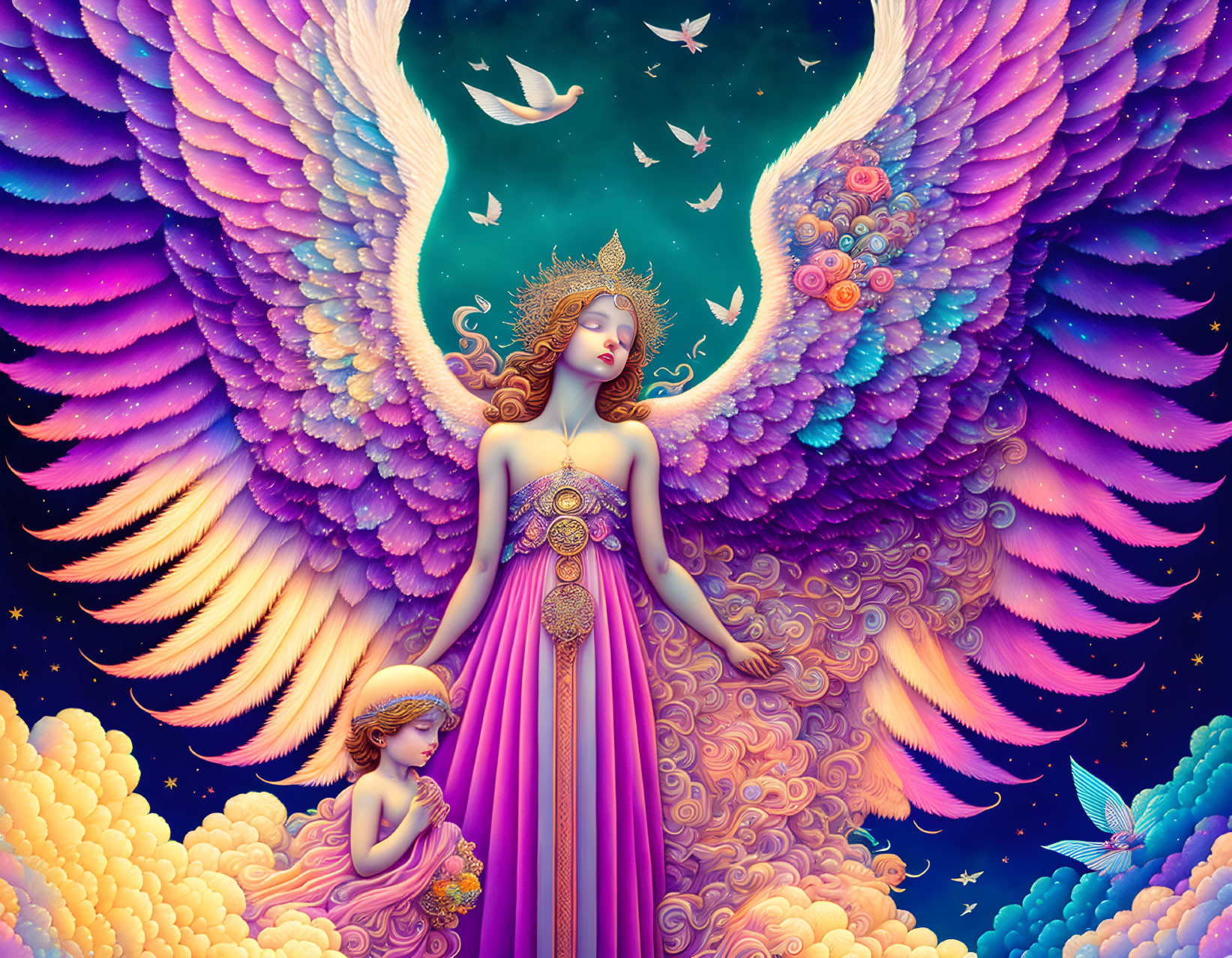
Introduction
In the ever-evolving world of artificial intelligence, one tool has captured the imagination of artists, designers, and tech enthusiasts alike: Deep Dream Generator. This groundbreaking platform harnesses the power of deep learning algorithms to transform ordinary images into surreal, dreamlike masterpieces, blurring the lines between human and machine creativity. In this comprehensive article, we’ll dive deep into the world of Deep Dream Generator, exploring its underlying principles, its mesmerizing outputs, and the impact it’s having on the creative landscape.
The Science Behind Deep Dream Generator
1. Neural Networks and Deep Learning
At the heart of Deep Dream Generator lies a sophisticated neural network architecture that enables it to process and analyze visual data in a way that mimics the human brain. By leveraging deep learning techniques, the platform can identify patterns, extract features, and generate new images based on its training data.
2. Convolutional Neural Networks (CNNs)
Deep Dream Generator utilizes a specific type of neural network called a Convolutional Neural Network (CNN). CNNs are particularly well-suited for image processing tasks, as they can identify and extract local features, such as edges, shapes, and textures, and use these features to build a hierarchical understanding of the image.
3. Inception Models
Deep Dream Generator employs a specific type of CNN called an Inception model, which is designed to be more efficient and effective at processing visual data. Inception models use a combination of convolutional filters of varying sizes to capture features at multiple scales, allowing for more accurate and nuanced image recognition and generation.
The Deep Dream Generator Process
1. Image Uploading and Selection
To begin the Deep Dream process, users simply upload an image to the Deep Dream Generator platform. The platform offers a wide range of pre-selected images to choose from, or users can upload their own custom images.
2. Neural Network Activation
Once an image is selected, Deep Dream Generator activates its neural network and begins analyzing the image at a deep level. The platform identifies key features and patterns in the image and starts to amplify and distort these features based on its training data.
3. Iterative Generation
The Deep Dream process is iterative, with the neural network generating new images based on the previous iteration. As the process continues, the images become increasingly surreal and dreamlike, with familiar objects and shapes morphing into strange and unexpected forms.
4. Output Selection and Customization
After several iterations, Deep Dream Generator presents the user with a selection of generated images. Users can then choose their favorite images and customize them further using the platform’s built-in editing tools, such as adjusting the strength of the dream effect or applying various filters and overlays.
The Mesmerizing Outputs of Deep Dream Generator
1. Surreal and Dreamlike Imagery
The most striking aspect of Deep Dream Generator’s outputs is their surreal and dreamlike quality. By amplifying and distorting the features in an image, the platform creates a sense of disorientation and wonder, transporting viewers into a world that is both familiar and alien.
2. Fractal-like Patterns
Many of Deep Dream Generator’s outputs feature intricate, fractal-like patterns that seem to repeat and evolve across the image. These patterns are a result of the neural network’s ability to identify and amplify recurring features and shapes, creating a sense of depth and complexity that is both mesmerizing and unsettling.
3. Unexpected Juxtapositions
One of the most fascinating aspects of Deep Dream Generator’s outputs is the unexpected juxtapositions of objects and shapes that emerge from the process. A simple image of a dog, for example, might be transformed into a surreal menagerie of canine-like creatures, each with its own unique features and characteristics.
4. Artistic Interpretations
While Deep Dream Generator’s outputs may seem like the product of pure chance, they are in fact the result of a complex interplay between the neural network’s training data and the specific features of the input image. In this sense, Deep Dream Generator can be seen as a form of artificial creativity, with the platform generating unique and unexpected interpretations of the visual world.
The Impact of Deep Dream Generator
1. Democratizing Creativity
By making it easy for anyone to create surreal and dreamlike images, Deep Dream Generator has democratized the creative process, empowering artists, designers, and casual users alike to explore the boundaries of visual expression.
2. Inspiring New Forms of Art
Deep Dream Generator has also inspired the creation of new forms of art, with artists and designers using the platform as a starting point for further experimentation and exploration. From glitch art to generative design, Deep Dream Generator has opened up new avenues for creative expression.
3. Advancing AI Research
While Deep Dream Generator may seem like a purely creative tool, it is also contributing to the advancement of AI research. By exploring the inner workings of deep learning algorithms and their ability to generate novel images, researchers can gain valuable insights into the nature of machine creativity and the potential of artificial intelligence to augment and enhance human creativity.
The Future of Deep Dream Generator
1. Continued Innovation and Advancement
As the field of deep learning continues to evolve, we can expect to see ongoing innovation and advancement in Deep Dream Generator and similar platforms. Future iterations of the tool may incorporate even more sophisticated techniques for image generation and manipulation, as well as expanded capabilities for multimodal creativity (e.g., combining visual and auditory elements).
2. Integrating with Other Creative Tools
Deep Dream Generator is already being integrated with other creative tools and platforms, such as digital art software and social media platforms. As these integrations become more seamless and sophisticated, we can expect to see even more creative applications and use cases emerge.
3. Exploring the Boundaries of Machine Creativity
Ultimately, Deep Dream Generator and similar platforms are pushing the boundaries of what is possible in the realm of machine creativity. By demonstrating the ability of deep learning algorithms to generate novel and unexpected images, these tools are challenging our assumptions about the nature of creativity and the role of technology in the creative process.
Conclusion
Deep Dream Generator is more than just a tool for creating surreal and dreamlike images; it is a testament to the power of artificial intelligence to augment and enhance human creativity. By harnessing the power of deep learning algorithms, Deep Dream Generator has opened up new avenues for creative expression and exploration, inspiring artists, designers, and casual users alike to push the boundaries of what is possible in the visual realm. As we continue to explore the potential of machine creativity, it is clear that Deep Dream Generator and similar platforms will play a crucial role in shaping the future of art and design in the digital age.
For More Info Visit Here: Docoro.Shop.
FAQs
- What is Deep Dream Generator, and how does it work?
Deep Dream Generator is a platform that uses deep learning algorithms to transform ordinary images into surreal, dreamlike masterpieces. By activating a neural network and iteratively generating new images based on the previous iteration, Deep Dream Generator creates unique and unexpected visual interpretations of the input image. - What kind of images can I create with Deep Dream Generator?
Deep Dream Generator can transform a wide range of images, from photographs and digital art to simple shapes and patterns. The platform’s outputs are characterized by their surreal and dreamlike quality, featuring unexpected juxtapositions of objects and shapes, as well as intricate, fractal-like patterns. - How can I use Deep Dream Generator in my creative practice?
Deep Dream Generator can be used as a starting point for further experimentation and exploration in a variety of creative disciplines, from visual art and design to photography and digital media. The platform’s outputs can be used as inspiration for new works, or as raw material for further manipulation and transformation using other creative tools and techniques. - What are some of the potential applications of Deep Dream Generator beyond art and design?
While Deep Dream Generator is primarily used for creative purposes, the underlying technology has potential applications in fields such as scientific visualization, data analysis, and even medical imaging. By using deep learning algorithms to identify and amplify patterns in complex data sets, Deep Dream Generator and similar platforms could help researchers and professionals gain new insights and perspectives on their work. - What are the ethical considerations surrounding the use of Deep Dream Generator and similar AI-powered creative tools?
As with any powerful technology, Deep Dream Generator raises important questions about the ethics of machine creativity and the potential for misuse or abuse. It is important for users to be aware of the limitations and biases of the underlying algorithms, and to use the platform responsibly and ethically. Additionally, as these tools become more advanced and widely adopted, it will be crucial for society to engage in thoughtful discussions about the societal impact and implications of machine creativity.






